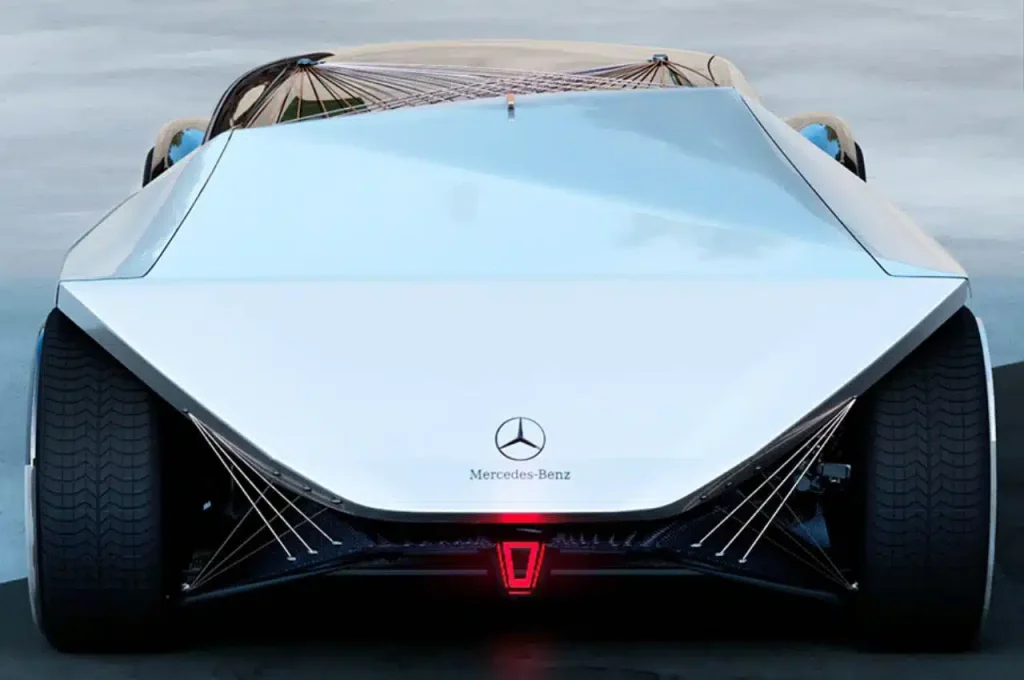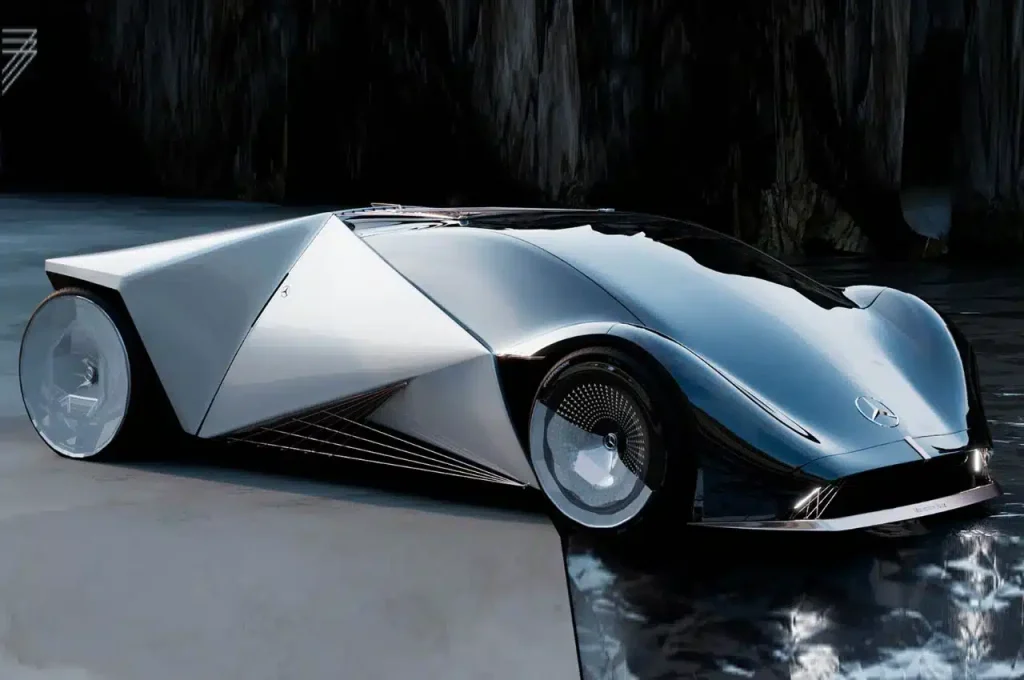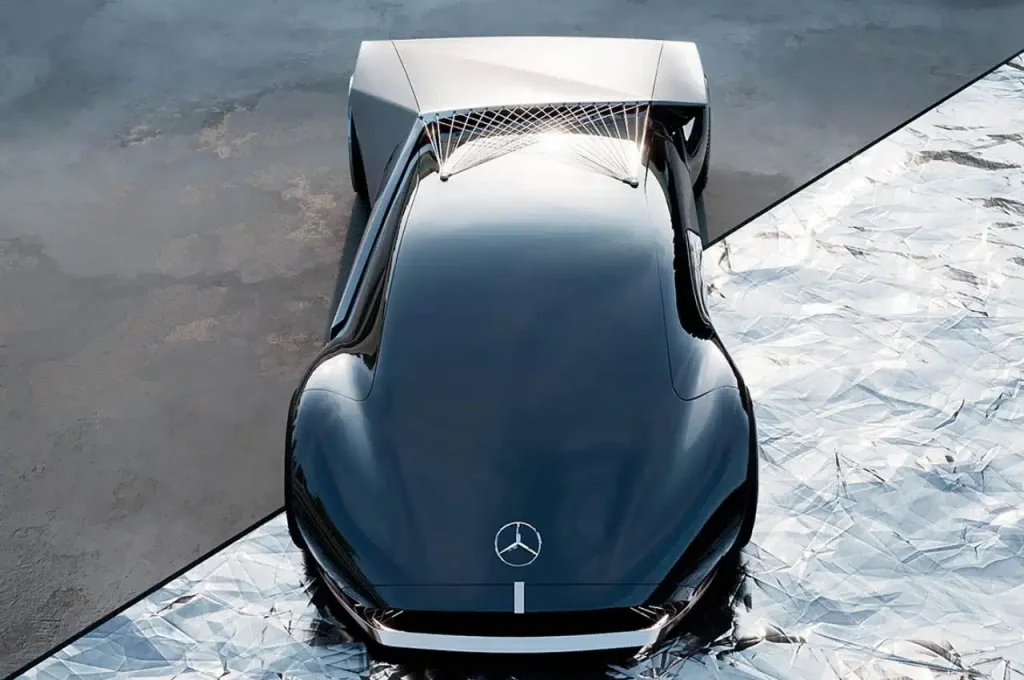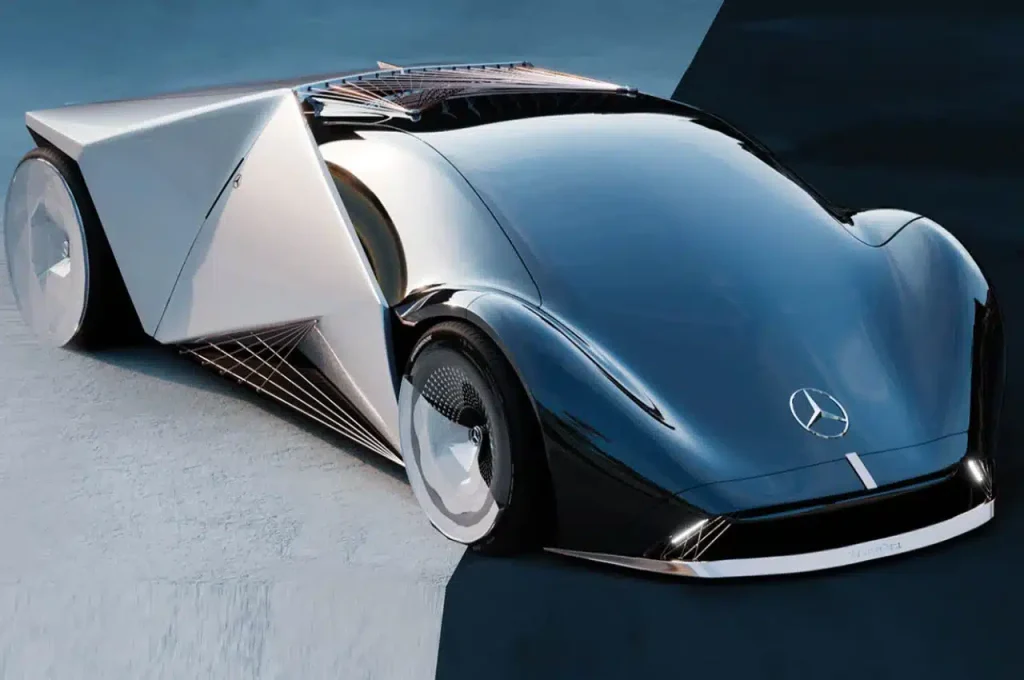Introduction: A Symphony on Wheels
When you think of concept cars, futuristic designs, cutting-edge technology, and sleek aesthetics likely come to mind. But the Mercedes-Benz Harp concept car takes innovation a step further, intertwining the worlds of automotive engineering and musical artistry. Designed by a talented transportation design student, ByeongIn Oh, this concept car is inspired by the elegance and grace of a harp. Let’s dive into the details of this extraordinary vehicle and explore what makes it so unique.
The Birth of the Mercedes-Benz Harp Concept
The idea behind the Mercedes-Benz Harp concept car is as harmonious as the instrument it’s named after. ByeongIn Oh, a visionary in transportation design, sought to create a vehicle that not only pushes the boundaries of automotive design but also integrates an element of art and culture. By drawing inspiration from a harp, ByeongIn Oh has crafted a car that is both visually stunning and conceptually innovative.
A Design Like No Other
Exterior Elegance: The Harp Strings Connection
One of the most striking features of the Harp concept car is the incorporation of harp strings into its design. These strings are not just a decorative element but are integrated into the vehicle’s structure. Asymmetrical windshield panels connect the harp strings to the top and right sides of the car, creating a seamless blend of musical instrument and automotive design. The front and back grills of the car also feature harp strings, adding to the overall aesthetic and theme of the vehicle.




Influences from Iconic Designs
While the Harp concept car is unique, it also pays homage to other iconic Mercedes-Benz designs. The body of the car is based on the Mercedes AVTR concept, known for its futuristic and avant-garde design. Additionally, the front of the Harp concept car is reminiscent of the W196R Formula-1 racing car developed for the 1954 and 1955 seasons. This blend of influences creates a vehicle that is both a nod to the past and a leap into the future.
Interior Harmony: Dual Compartments for Diverse Experiences
The interior of the Harp concept car is as innovative as its exterior. It is divided into two distinct sections, each catering to different needs and preferences.
Silent Compartment: A Sanctuary of Solitude
For those who seek peace and quiet, the silent compartment offers a sanctuary of solitude. This section is designed to provide a tranquil environment where passengers can relax and unwind, free from the distractions of the outside world.
Open Compartment: A Space for Socialization
On the other hand, the open compartment is perfect for socialization and interaction. This space is designed to encourage conversation and connection, making it ideal for passengers who want to enjoy each other’s company while on the move.
A Futuristic Luxury Car with a Musical Twist
Color Contrasts: Matte Silver and Glossy Black
One of the most underrated features of the Mercedes-Benz Harp concept car is its striking color scheme. The contrasting hues of matte silver and glossy black give the car a dashing and sophisticated appearance. These colors not only enhance the vehicle’s aesthetic appeal but also highlight its unique design elements.
Inspired by Music: The Essence of the Harp
The essence of the Mercedes-Benz Harp concept car lies in its musical inspiration. The harp, known for its beauty and elegance, serves as the perfect muse for this vehicle. The integration of harp strings into the car’s design is a testament to the harmony between art and engineering, creating a symphony on wheels.
The Designer Behind the Concept: ByeongIn Oh
A Student with a Vision
ByeongIn Oh, the creative mind behind the Harp concept car, is a transportation design student with a passion for innovation. His vision for this vehicle goes beyond conventional automotive design, incorporating elements of art and culture to create something truly unique.
A Promising Future
While the Harp is not a real car, it showcases the potential for future collaborations between automakers and designers. ByeongIn Oh’s work demonstrates the importance of thinking outside the box and pushing the boundaries of what is possible in automotive design.
The Mercedes AVTR Concept Car: A Source of Inspiration
A Futuristic Marvel
The Mercedes AVTR concept car, which served as the inspiration for the Harp concept, is a futuristic marvel in its own right. Unveiled at the Consumer Electronics Show (CES) in 2020, the AVTR is known for its organic design and cutting-edge technology. The car’s design was influenced by the movie “Avatar,” emphasizing a connection between humans, machines, and nature.
Advanced Technology
The AVTR features advanced technology, including a biometric connection that allows the car to recognize the driver’s heartbeat and breathing. This concept of creating a symbiotic relationship between the driver and the vehicle is a key element that influenced the design of the Harp concept car.
The W196R Formula-1 Racing Car: A Nod to the Past
A Legendary Racer
The W196R Formula-1 racing car is another source of inspiration for the Harp concept car. Developed for the 1954 and 1955 Formula-1 seasons, the W196R is legendary for its performance and design. It helped Mercedes-Benz achieve significant success in the racing world, cementing its place in automotive history.
Design Elements
The front of the Harp concept car, reminiscent of the W196R, pays homage to this iconic racer. By blending elements of this historic vehicle with futuristic design, the Harp concept car creates a bridge between the past and the future of automotive innovation.
The Future of Concept Cars: A Blend of Art and Engineering
The Role of Concept Cars
Concept cars play a crucial role in the automotive industry. They allow designers and engineers to explore new ideas and push the boundaries of what is possible. While many concept cars never make it to production, they often influence future designs and technologies.
The Potential of the Harp Concept
The Mercedes-Benz Harp concept car, with its unique blend of musical inspiration and advanced design, represents the potential for future innovation in the automotive industry. While it may not become a reality, it serves as a reminder of the importance of creativity and imagination in automotive design.
Conclusion: A Harmonious Vision of the Future
The Mercedes-Benz Harp concept car is a testament to the power of creativity and innovation. By integrating elements of a musical instrument into automotive design, ByeongIn Oh has created a vehicle that is both visually stunning and conceptually groundbreaking. This concept car serves as a reminder that the future of automotive design lies in the harmonious blend of art, culture, and engineering.


































